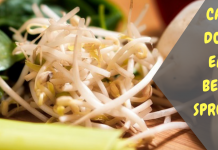Welcoming a new puppy into your home is a heartwarming adventure filled with boundless energy, curious exploration, and unconditional love. As you embark on this joyful journey, one of the most important decisions you’ll make is choosing the right food to nourish your furry friend. Proper nutrition is the cornerstone of your puppy’s growth, development, and overall well-being, ensuring they blossom into a healthy and happy adult dog. In this guide, we’ll walk you through the essentials of puppy feeding, from understanding nutritional needs to selecting the best food options, all while fostering a loving and supportive environment for your newest family member. Let’s set the foundation for a lifetime of wagging tails and playful moments, starting with a bowl of the right nourishment.
Understanding Puppy Nutritional Needs
When it comes to nourishing your furry friend, understanding their dietary requirements is crucial. Puppies grow rapidly, and their bodies need the right balance of nutrients to support healthy development. Here are some key components to consider:
- Protein: Essential for building strong muscles and tissues, protein should be the cornerstone of your puppy’s diet. Look for high-quality sources like chicken, lamb, or fish.
- Fats: These provide the energy that puppies need for play and growth. Healthy fats, such as those from fish oil or chicken fat, also support brain development and a shiny coat.
- Vitamins and Minerals: Vital for a robust immune system and overall health, make sure your puppy’s food includes a balanced mix of vitamins A, D, E, and minerals like calcium and phosphorus.
Avoid fillers like corn and soy that provide little nutritional value. Instead, focus on whole grains like brown rice or oats, which offer more nutrients and are easier on your puppy’s digestive system. Always consult your veterinarian to tailor a diet plan that meets the specific needs of your pup’s breed, size, and activity level. A well-fed puppy is a happy puppy, ready to grow into a healthy adult dog.

Selecting the Best Food for Your Puppys Breed and Size
Understanding your puppy’s unique nutritional needs is key to ensuring their healthy growth and development. Each breed has its own specific dietary requirements, and the size of your puppy plays a significant role in determining the right food. Small breeds often need a diet that’s rich in calories and nutrients to support their high energy levels and fast metabolism. On the other hand, large breeds require food that promotes steady growth to prevent skeletal issues.
- Small Breeds: Opt for high-calorie, nutrient-dense foods with smaller kibble sizes to suit their tiny mouths.
- Medium Breeds: Look for balanced nutrition that supports steady growth and maintains energy levels.
- Large Breeds: Choose formulas with controlled calcium and phosphorus levels to support joint health and proper growth rates.
Remember, regardless of breed or size, always check the ingredient list for quality protein sources and avoid fillers like corn or soy. Tailor your choices to your puppy’s specific needs, and consult your veterinarian for personalized advice.

Decoding Pet Food Labels for Informed Choices
Understanding the information on pet food packaging can be a game-changer in providing your puppy with the best nutrition. When examining the label, start by focusing on the ingredient list. Ingredients are typically listed in order of weight, so ensure that a high-quality protein source, such as chicken or beef, is among the first listed. Watch out for vague terms like ”meat meal” or “animal by-products,” which can indicate lower-quality ingredients. Instead, look for clear, specific terms that reflect a single source of protein.
Another crucial aspect is the nutritional adequacy statement. This statement verifies that the food meets the nutritional levels established by the AAFCO (Association of American Feed Control Officials) Dog Food Nutrient Profiles. Look for phrases like “complete and balanced,” which indicate that the food provides all the essential nutrients your puppy needs for growth and development. Additionally, consider the life stage recommendations on the packaging, as puppies have different dietary needs compared to adult dogs. A quality puppy food will have tailored formulations to support bone development, immune health, and energy levels. Remember, your puppy’s well-being starts with informed choices at mealtime.

Introducing New Foods: Tips for a Smooth Transition
Transitioning your puppy to new foods can be an exciting journey, but it requires a gentle approach to ensure their comfort and health. Puppies have sensitive digestive systems, so introducing new foods should be done gradually. Start by mixing a small amount of the new food with their current diet, and gradually increase the new food over a week. This slow introduction helps prevent stomach upset and allows your puppy to adjust to the new flavors and textures.
- Observe their reactions: Keep an eye on any changes in behavior, appetite, or stool consistency.
- Maintain a balanced diet: Ensure the new food meets all nutritional requirements suitable for your puppy’s breed, age, and size.
- Consult your vet: If you’re unsure about any reactions or need guidance on dietary choices, don’t hesitate to seek professional advice.
Remember, patience is key. Each puppy is unique, and finding the right balance might take some time, but with love and attention, your furry friend will be enjoying their new meals in no time!
















